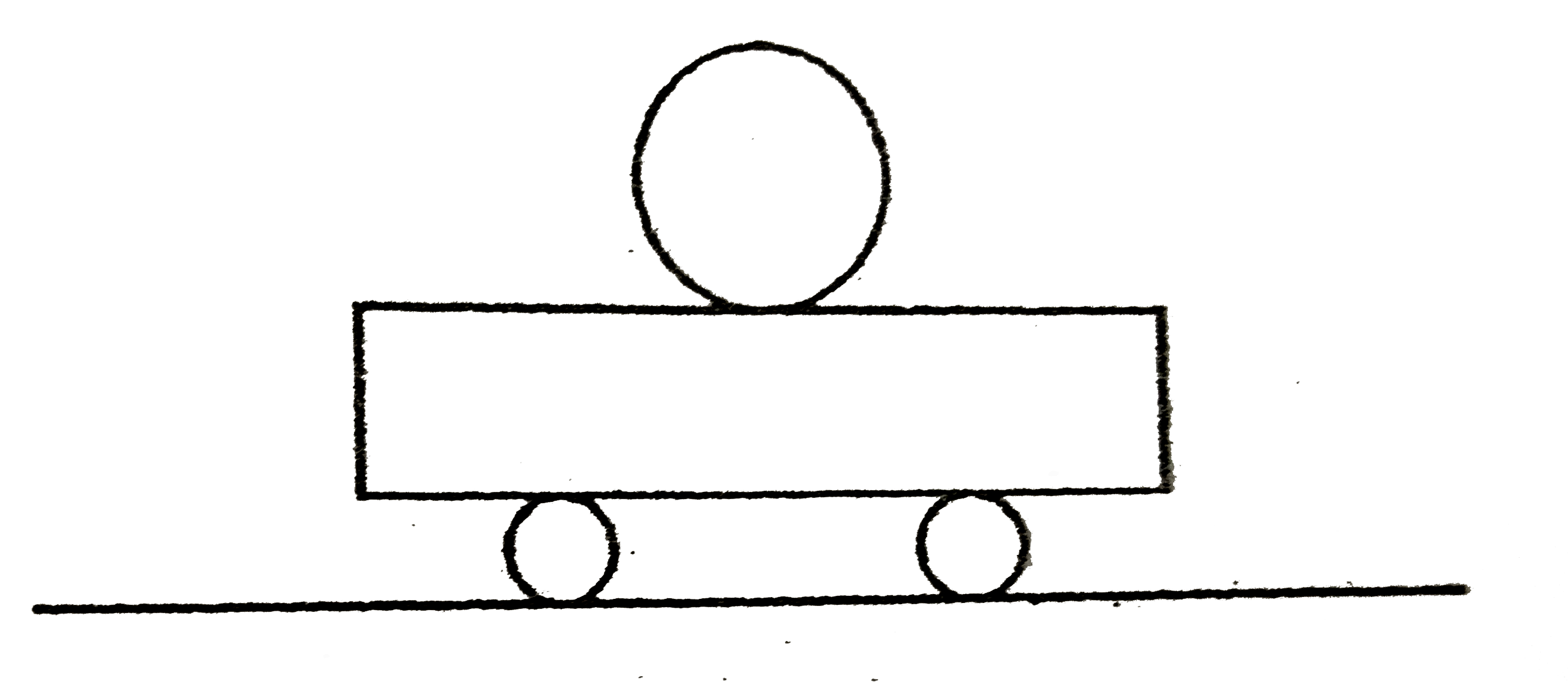
Determine the maximum horizontal force F that may be applied to the plank of mass m for which the solid sphere does not slip as it begins to roll on the plank. The sphere has a mass M and radius R. The coefficient of static and kinetic friction between the sphere and the plank are μS and μk respectively.

the free diagrams of the sphere and the plank are as shown below:
Writing equation of motion
For sphere equations of motion
For sphere linear acceleration a1=μsMgM=μsg .. (i)
Angular acceleration α=(μsMg)R25MR2
=52μSgR ...(ii)
For plank linear acceleration
a2=F−μSMgm ..(iii)
For no slipping a2=a1+Rα ..(iv)
Solving the above four equations we get
F=μSg(M+72m)
Thus, maximum value of F can be
μSg(M+72m)
Topper's Solved these Questions
- ROTATIONAL MECHANICSBOOK - DC PANDEY ENGLISHCHAPTER - ROTATIONAL MECHANICSEXERCISE - Exercise 12.1
10 Videos
- ROTATIONAL MECHANICSBOOK - DC PANDEY ENGLISHCHAPTER - ROTATIONAL MECHANICSEXERCISE - Exercise 12.2
4 Videos
- ROTATIONAL MECHANICSBOOK - DC PANDEY ENGLISHCHAPTER - ROTATIONAL MECHANICSEXERCISE - Miscellaneous Examples
2 Videos
- ROTATIONBOOK - DC PANDEY ENGLISHCHAPTER - ROTATIONEXERCISE - (C) Chapter Exercises
39 Videos
- ROTATIONAL MOTIONBOOK - DC PANDEY ENGLISHCHAPTER - ROTATIONAL MOTIONEXERCISE - Integer Type Questions
17 Videos
Similar Questions
Coefficient of kinetic friction and coefficient of static friction between two blocks is μk and μs respectively. In general
View SolutionIf μs,μk and μr are the coefficients of static, kinetic and rolling friction respectively then
View SolutionA plank with a box on it at one end is gradully raised about the other end. As the angle of inclination with the horizntal reaches 30∘ , the box starts to slip and slide 4.0m down the plank in 4.0s . The coefficients of static and knitic friction between the box and the plank will be, respectively.

View SolutionA solid sphere of mass m and radius R is placed over a plank of same mass m. There is sufficient friction between sphere and plank to prevent slipping. Force of friction between sphere and plank is

View SolutionA solid sphere of mass m and radius R is placed over a plank of same mass m. There is sufficient friction between sphere and plank to prevent slipping.

Angular acceleration of sphere is
View SolutionA hollow sphere of mass m and radius R is rolling downdard on a rough inclined plane of inclination θ. If the coefficient of friction between the hollow sphere and incline is μ, then
View SolutionA solid cylinder is rolling without slipping on a plane having inclination θ and the coefficient of static friction μs. The relation between θ and μs is
View SolutionA disc of mass m and radius R is placed over a plank of same mass m. There is sufficient friction between disc and plank to prevent slipping. A force F is applied at the centre of the disc.

Force of friction between the disc and the plank is
View SolutionIn the following figure, a sphere of radius 3m rolls on a plank. The accelerations of the sphere and the plank. The accelerations of the sphere and the plank are indicated. The value of α is

View SolutionA solid sphere of mass m rolls without slipping on an inlined plane of inclination 0. what shoul be the minimum coefficient of static feiction to support pure rolling?
View Solution
